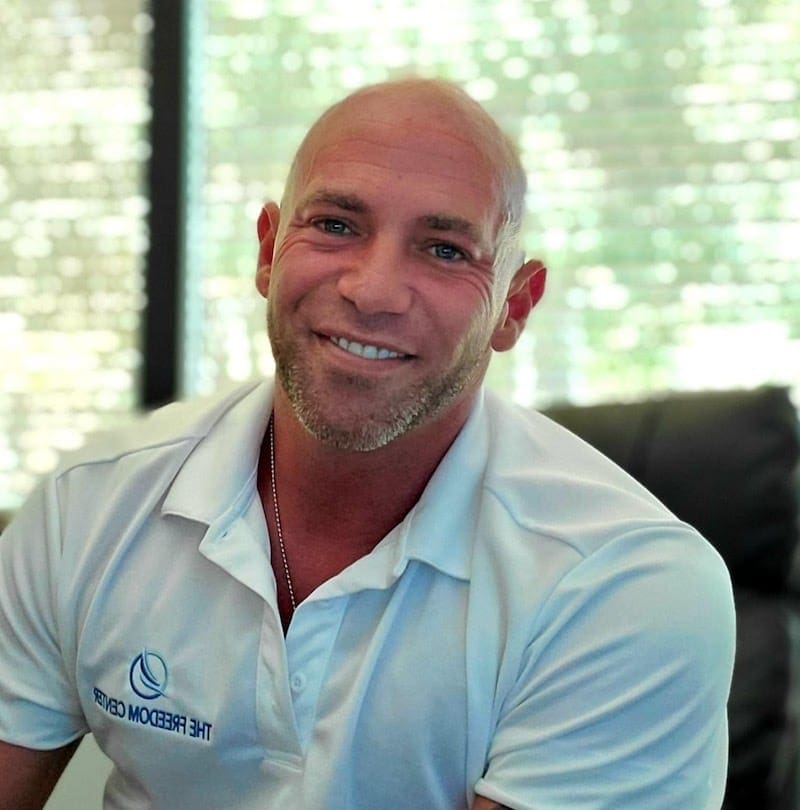Codependency is a complex and often misunderstood condition that can develop in relationships where one person is struggling with substance abuse. For loved ones of individuals battling addiction, the line between helping and enabling can become blurred, leading to a pattern of behavior that is harmful to both parties. Recognizing the signs of codependency is crucial in these situations, as it not only affects the well-being of the loved one but also perpetuates the cycle of addiction.
Let’s explore the link between codependency and addiction to shed some light on how it impacts the lives of people who struggle with substance use and their partners.
What is Codependency?
Codependency is a behavioral condition in which an individual excessively relies on a partner, family member, or friend for their emotional, psychological, and even physical well-being. In the context of substance abuse, codependency often manifests as an unhealthy and unbalanced relationship dynamic, where the non-addicted person feels compelled to take care of the addicted individual, often to their own detriment.
This behavior often stems from a place of love and concern, but it can quickly turn into enabling, where the codependent person inadvertently supports the addiction by protecting the addicted individual from the consequences of their actions.
Signs of Codependency
Identifying codependency in relationships where substance abuse is present can be challenging, as the behaviors may seem caring or loving on the surface. However, several key signs can indicate a codependent relationship.
1. Excessive Caregiving
A codependent person often takes on the role of caretaker, feeling responsible for the addict’s well-being, happiness, and sobriety. They may neglect their own needs, emotions, and life responsibilities in the process. This excessive caretaking can manifest in ways such as:
- Constantly checking on the addict’s whereabouts and activities.
- Handling their responsibilities, like paying bills or managing their finances.
- Covering up or making excuses for their substance use to protect them from consequences.
2. Difficulty Setting Boundaries
Codependent people often struggle to set and enforce healthy boundaries. They may allow the person with an addiction to engage in harmful behaviors without consequence or may feel guilty or anxious when they try to set limits. This lack of boundaries can lead to:
- Tolerating disrespect, dishonesty, or abuse.
- Allowing the person with an addiction to use substances in the home or around the family.
- Giving in to the addict’s demands, even when they know it’s harmful.
3. Self-Worth Tied to the Addict’s Behavior
Codependent individuals often derive their sense of self-worth from the addict’s behavior and feelings. They may feel successful and happy when the person with an addiction is doing well but devastated and worthless when the person with an addiction relapses or struggles. This emotional rollercoaster can include:
- Feeling responsible for the addict’s sobriety and blaming oneself for their relapses.
- Experiencing deep shame or guilt when the person with an addiction engages in destructive behaviors.
- Constantly seeking approval or validation from the person with an addiction.
4. Enabling Behaviors
Enabling is one of the most common signs of codependency in relationships affected by substance abuse. Enabling behaviors allow the person with an addiction to continue their substance use without facing the full consequences of their actions. Examples include:
- Providing money that the person with an addiction might use to buy drugs or alcohol.
- Lying to cover up the addict’s actions or minimize the severity of the situation.
- Taking over the addict’s responsibilities, such as work or childcare, to prevent them from experiencing negative outcomes.
5. Neglecting Personal Health and Well-Being
Codependent individuals often neglect their own physical, emotional, and mental health in their effort to care for the person with an addiction. This can lead to burnout, anxiety, depression, and other health issues. Signs of this neglect include:
- Ignoring one’s own emotional needs or suppressing feelings of anger, sadness, or frustration.
- Neglecting physical health, such as skipping medical appointments, not eating properly, or lacking sleep.
- Isolating oneself from friends, family, or activities that once brought joy.
6. Denial and Minimization
Codependent individuals may deny or minimize the severity of the addict’s substance use or the impact it has on their own lives. This denial can be a way of coping with the pain and fear associated with the situation. Signs of denial and minimization include:
- Downplaying the addict’s substance use, believing it’s not “that bad.”
- Ignoring or rationalizing red flags, such as legal issues, financial problems, or health concerns.
- Convincing oneself that the person with an addiction will change if they just try harder or if circumstances improve.
7. Fears of Abandonment
A deep-seated fear of abandonment often drives codependent behaviors. The codependent person may stay in the relationship, even when it’s unhealthy because they are afraid of being alone or losing the relationship. This fear can lead to:
- Staying in the relationship despite ongoing abuse or harm.
- Avoiding difficult conversations or confrontations out of fear of driving the person with an addiction away.
- Constantly seeking reassurance from the person with an addiction or making sacrifices to keep them happy.
The Cycle of Codependency and Addiction
Substance abuse and codependency are often intertwined in a destructive cycle. The addicted person becomes reliant on substances to cope with their emotions. In contrast, the codependent person becomes reliant on the person with an addiction for their sense of purpose and self-worth.
The codependent person might engage in enabling behaviors, such as covering up for the addict, making excuses for their behavior, or even supplying them with substances in an attempt to keep the peace or maintain the relationship.
This cycle is difficult to break because it feeds on both individuals’ vulnerabilities and emotional needs. The addict relies on the codependent to shield them from the consequences of their addiction, while the codependent relies on the addict to feel needed and valued.
Over time, this cycle can become deeply ingrained, making it difficult for either person to see the situation clearly.
Strategies for Overcoming Codependency
Overcoming codependency is a journey that requires self-awareness, commitment, and, often, professional support, especially in the context of addiction recovery. Here are some strategies that can be helpful:
- Seek professional help: Therapy, particularly cognitive-behavioral therapy (CBT) and dialectical behavior therapy (DBT), can be beneficial in addressing underlying issues that could have led to codependency and developing healthier coping mechanisms.
- Develop healthy boundaries: Learning to say “No” and prioritizing your own needs is crucial. Developing healthy boundaries might involve limiting time, energy, and resources devoted to others.
- Build self-esteem: Focusing on personal interests, setting achievable goals, and practicing self-compassion can help build a stronger sense of self.
- Practice self-care: Engaging in and enjoying the benefits of activities that promote physical and emotional well-being, such as exercise, meditation, or hobbies, is a great way to become more of an individual.
- Learn effective communication: Expressing feelings and needs assertively and honestly can improve relationship dynamics and self-advocacy skills.
- Join support groups: Organizations like Codependents Anonymous (CoDA) offer a supportive community and structured program for recovery based on Alcoholics Anonymous’s Twelve Steps.
- Practice mindfulness: Developing awareness of thoughts, feelings, and behaviors in the present moment can help break learned codependent behaviors.
- Cultivate independence: These are crucial steps, including pursuing personal interests, building a support network outside of the person with addiction, and developing self-reliance.
If you or someone you know is struggling with codependency or substance abuse, reaching out to a professional rehab center can provide the guidance and support needed to navigate this difficult journey. Remember, both the codependent person and the addict deserve a chance at a healthier, happier life.











































